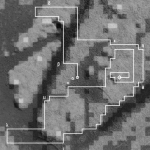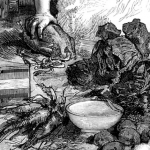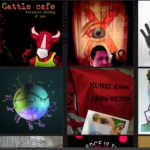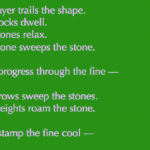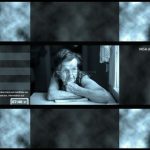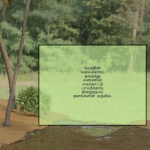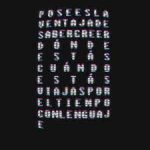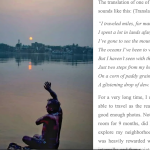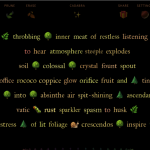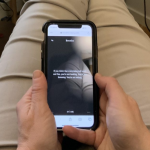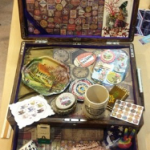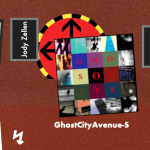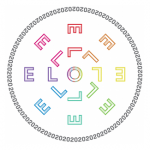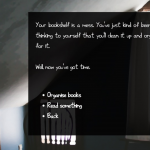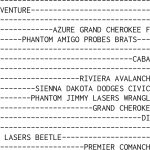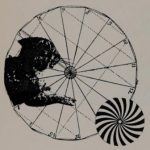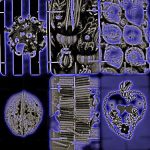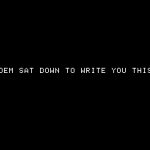2022
In this article, Richard Carter outlines an ongoing critical and creative engagement in electronic literature, digital sensing, and ecological concerns. Like many who are now publishing critical and creative works together (particularly in The Digital Review), Carter situates his practices in a set of entangled disciplines, and then discusses his developing project Landform.
While Gastropoetics is a marginal practice, these culinary experiments explore the relational dynamics of cooking, hospitality, and eating as persistent humanistic practices, even as such practices are increasingly mediated by "food selfies" and other emerging, performative taste practices. Key to understanding the appeal of gastropoetics is the ad hoc nature of human production and consumption (see de Certeau's "everyday life") performed under the constraints of the generated menu, of the platform, and of the mnemotechnical system itself.
While presenting a series of four selected E-Lit artworks, Marques and Gago demonstrate how our recent pandemic will affect new media art, similarly to the ways in which the Athens Plague affected the writing (and reception) of Greek tragedies. And the same goes for Cinema and Aids, smallpox and illustration, photography and the third bubonic plague, usw.
Dani Spinosa reflects on the relocation of e-Lit scholarship and pedagogy "in the remote classroom for the precariat writ large."
Through the examples of three types of digital stories, including an interactive narrative for the smartphone based on notifications, a web narrative based on a real time data flow, and the widely used social media feature of stories, Bouchardon and Fülöp explore the relationship between the digital, temporality, and narrative. They ask, "what new narrative forms, or even new concepts of narrative do these new temporal experiences provided by digital technology offer to us?"
Reflections on an emerging digital poetry whose primary theme is ecological loss, and personal reminiscence.
While defining the art object in a post-digital world, Maria Goichoechea de Jorge observes in media artists a nostalgia for an analogue craftsmanship; a rebellion against machinic perfection; and a resistance to forms of human creativity that propel us into an ever more profound symbiosis with our technological lifeworld.
For Saint Augustine, biblical scripture was indispensible to his being able to finish the final draft of his life story. Hemingway advocated stopping midway in a sentence, to ensure a fresh start tomorrow. For us today in the age of algorithmic governance, our stories are more likely to be generated continuously through the words of others using Google search, autocomplete and the algorithm’s statistically-informed guess. In this article, Fernanda Mugica explores the real time writing in charly.gr’s Peronismo (spam), from 2010, a visual poem that combines music and text; Matías Buonfrate's “No poseas un miedo” (2020); and Argentine poet Francisco López Merino's C0d3 P03try.
Building on the work of Souvik Mukherjee (2017), T. Shanmugapriya and Nirmala Menon (2018, 2019), Samya Brata Roy identifies emergent elements of a multimodal E-Lit tradition in India.
2021
Literary forms seen as tools of mind transgressing the field of the literary and repurposing digital media so that they are capable of refocusing cognition in beneficial ways – these are the lines of thought shaping Kyle Booten’s analysis of algorithmic co-writers. To be able to respond to both challenges, it is proposed that researchers rigorously and systemically study how digital tools are being creatively used and repurposed, learning from models that have emerged within the mainstream Human-Computer Interaction research.
In a study that traverses more than half a century – going from e-lit precursor Christopher Strachey’s M.U.C. Love Letter Generator (1952) to Michael Joyce’s experimental hypertext afternoon: a story (1990) to Kate Pullinger’s data-driven touchscreen work Breathe (2018) – Rettberg (University of Bergen, Norway) situates experimentation with digital interfaces in a longer tradition of innovation in literary and scholarly production. She also argues for the central importance of such experimentation in the ongoing development of both electronic literature and the digital humanities, suggesting that speculation in the design of digital interfaces can help preserve and extend the interpretative and intuitive aspects of Western literary and scholarly traditions, while also bringing the limitations and exclusions of such knowledge systems into focus.
FEATURED ARTIST: In this essay, Caitlin Fisher reflects on the ideas, processes, and approaches that have shaped and influenced her work in digital storytelling and electronic literature for over 25 years. She invokes theorists like Borges, Haraway, and Aristotle and critical concepts of hybridity, string theory, hypermedia, and spatial narratives to illuminate readers about the simultaneous timelines, continuity, and forking paths that run through the river of her work.
Nacher, Rettberg, and Pold offer a curatorial statement about the COVID E-Lit Exhibition--one of the many exhibitions held at the ELO 2021 conference. This Exhibition in particular, they explain, focused on reactionary, reflexive, and recovery-based art in response to the COVID-19 pandemic.
Stanfill and Salter reflect on conferencing amidst their organization of the 2020 ELO Conference in Orlando, Florida that had to change to due a global pandemic. Sharing their experiences and wisdom, they discuss the strengths and weaknesses of various virtual platforms for conferencing, coupled with the contexts of concurrent politics, co-location, and lessons for the future.
This except from Twining: Critical and Creative Approaches to Hypertext Narratives explores the popular and open-source digital storytelling platform Twine. Authors Anastasia Salter and Stuart Moulthrop discuss the history of Twine as well as existing works and possible projects.
Nick Montfort discusses two of his computer-generated texts that manifest as print-on-demand books, websites and gallery installations. Though distinct in form and content, Autopia and The Truelist were guided by the author's self-imposed constraints and programmed with minimal code to produce predetermined, "novel-size" outputs. Montfort intends these texts to engage the imaginations of readers with the combinatory aspects of language in culture as well as invite them to a deeper reading of the generating code.
Leah Henrickson explores the contexts surrounding the publication of The Policeman's Beard is Half Constructed, advertised as “the first book ever written by a computer” at the time of its release in 1984. Drawing from contemporary reviews, personal correspondence with the book’s creators, and analysis of the book itself, Henrickson offers insight into precisely how this book was produced, and by whom. Although a computer program called Racter is listed as the author of The Policeman’s Beard, this attribution does not accurately reflect the human labor driving the book’s development and dissemination. This essay illuminates these networks of human labour that ultimately led to Racter and The Policeman's Beard.
The lively dialogue among the contributing authors, ebr’s longest-serving and newly appointed editors, and the engaged and interested audience, which accompanied the Post-Digital / Dialogues and Debates book launch in September 2020, is an interesting insight into the recent debates on the multifaceted ramifications of digital disruption and the ways in which it has transformed our society, culture, and aesthetics. The discussion throws some light as well on the always fascinating history of the early electronic literature initiatives which had laid the groundwork for what eventually turned out to become the whole new field of intermedia literary practice and the sub-discipline of trans- and interdisciplinary academic inquiry. The authors of the mammoth 2-volume anthology recruit from the variety of contexts and offer diverse looks at the post-digital condition of our contemporaneity.
In this conversation with ebr Editor Lai-Tze Fan, internationally acclaimed artist Caitlin Fisher talks through her origins, inspirations, and processes with a clear message: things can always be unlocked with more than one key and stories can always be told with more than one method. Fan asks Fisher about the 20th anniversary of These Waves of Girls at the end of Flash, the archival impulse of her stories from doll collections to hand-held museums, and the importance of creating tiny stories out of high technologies and giant institutional labs. Of the many lives Fisher has already lived and of her works to come, this conversation gives only a glimpse—a snap of the universe.
Dani Spinosa and Lai-Tze Fan discuss the need for a Canadian digital poetics, as well as for an understanding of its past developments, present shifts, and future possibilities.
